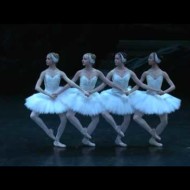
One of the things I have appreciated most about Warren Lamb’s work is how faithfully it adheres to the basic principles of movement set out by Rudolf Laban.
For example, Laban’s taxonomy has two broad categories: effort and space. Effort consists of four motion factors: Space, Weight, Time, and Flow. Qualities of these factors can be combined, to produce a wide variety of dynamic expressions.
Laban’s spatial scheme starts from a simple delineation of the cardinal directions – vertical, horizontal, and sagittal.… Read More









